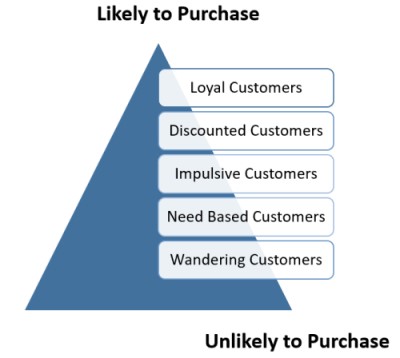Customer Relationship Measurement – Meaning, its need and importance
April 3, 2025
 Customer Relationship Measurement – Meaning, its need and importance
Customer Relationship Measurement – Meaning, its need and importance
Customers are the most important part of business. There cannot be any business without them. Only satisfied customers will be interested in buying and they will also refer other customers to buy. By measuring customer satisfaction a supplier can maintain a quality and long term relationship with customers and secure their future business and financial…
 Customer Relationship with Supplier
Customer Relationship with Supplier
For a positive growth of business all customers have to depend, directly or indirectly, on good and reliable suppliers. Apart from their expectations from the supplier the customers also need to be loyal to them so as to strengthen their relationship. Therefore customers should work on building a strong and long-lasting supplier relationship as they…
 Customers Response and its Advantages
Customers Response and its Advantages
Customer response is the reaction by the organization to the queries and activities of the customer. Dealing with these queries intelligently is very important as small misunderstandings could convey unalike perceptions. Success totally depends on understanding and interpreting these queries and then working out to provide the best solution. During this situation if the supplier…
Customers play the most significant part in business. In fact the customer is the actual boss in a deal and is responsible for the actually profit for the organization.
Customer is the one who uses the products and services and judges the quality of those products and services. Hence it’s important for an organization to retain customers or make new customers and flourish business.
To manage customers, organizations should follow some sort of approaches like segmentation or division of customers into groups because each customer has to be considered valuable and profitable.
Customers can be of following types:
These customers revisit the organization over times hence it is crucial to interact and keep in touch with them on a regular basis and invest much time and effort with them. Loyal customers want individual attention and that demands polite and respectful responses from supplier.
Loyal customers are the ones who will act as advocate for your organization.
More is the discount the more they tend towards buying. These customers are mostly related to small industries or the industries that focus on low or marginal investments on products.
Focus on these types of customers is also important as they also promote distinguished part of profit into business.

Handling these customers is a challenge as they are not particularly looking for a product and want the supplier to display all the useful products they have in their tally in front of them so that they can buy what they like from that display.
If impulsive customers are treated accordingly then there is high probability that these customers could be a responsible for high percentage of selling.
These are frequent customers but do not become a part of buying most of the times so it is difficult to satisfy them.
These customers should be handled positively by showing them ways and reasons to switch to other similar products and brands and initiating them to buy these.
These customers could possibly be lost if not tackled efficiently with positive interaction.
These customers are normally new in industry and most of the times visit suppliers only for confirming their needs on products.
They investigate features of most prominent products in the market but do not buy any of those or show least interest in buying.
To grab such customers they should be properly informed about the various positive features of the products so that they develop a sense of interest.
An organization should always focus on loyal customers and should expand or multiply the product range to leverage impulsive customers.
For other types of customers strategies should be renovated and enhanced for turning out these customers to satisfy their needs and modify these types of customers to let them fall under loyal and impulsive category.
Your email address will not be published. Required fields are marked *